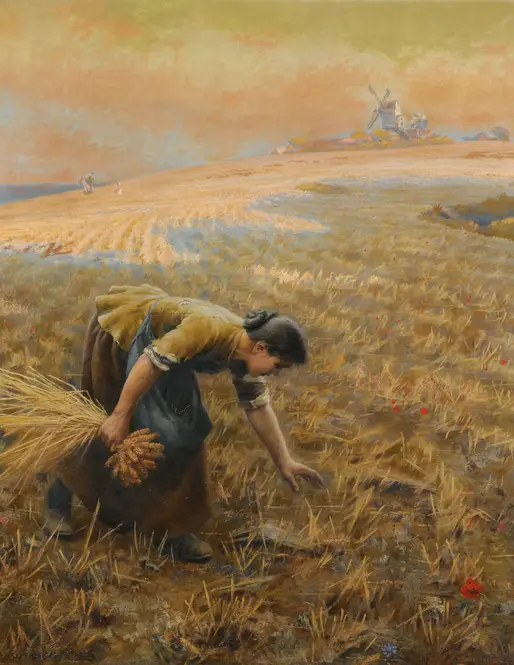Arthur Foord Hughes
Arthur Foord Hughes (1864–1932), English, Known for his delicate watercolors and evocative depictions of rural life, this British artist captured the quiet charm of the English countryside with a lyrical touch. His work often featured pastoral scenes—rolling fields, winding lanes, and cottages bathed in soft light—rendered with a keen eye for atmosphere and detail. While not as flashy as some of his contemporaries, Hughes’s paintings exude a timeless warmth, blending realism with a subtle romanticism.
Trained at the Royal Academy Schools, he absorbed influences from the Pre-Raphaelites but developed a more subdued, intimate style. His compositions favored harmony over drama, with muted palettes and careful attention to natural light. Though he occasionally painted portraits and genre scenes, landscapes remained his true passion, reflecting a deep connection to the Kent and Surrey countryside where he often worked.
Despite exhibiting regularly at the Royal Academy and other prestigious venues, Hughes never sought the spotlight. His reputation grew steadily among collectors who appreciated his understated elegance. Today, his works are held in regional galleries and private collections, cherished for their quiet beauty and technical finesse. While overshadowed by louder names of his era, his art endures as a gentle ode to the pastoral idyll.
Trained at the Royal Academy Schools, he absorbed influences from the Pre-Raphaelites but developed a more subdued, intimate style. His compositions favored harmony over drama, with muted palettes and careful attention to natural light. Though he occasionally painted portraits and genre scenes, landscapes remained his true passion, reflecting a deep connection to the Kent and Surrey countryside where he often worked.
Despite exhibiting regularly at the Royal Academy and other prestigious venues, Hughes never sought the spotlight. His reputation grew steadily among collectors who appreciated his understated elegance. Today, his works are held in regional galleries and private collections, cherished for their quiet beauty and technical finesse. While overshadowed by louder names of his era, his art endures as a gentle ode to the pastoral idyll.
-

Gleaning
Arthur Foord Hughes (English, 1864–1932)A luminous depiction of harvesters gathering remnants, where light and labor intertwine with quiet dignity.
